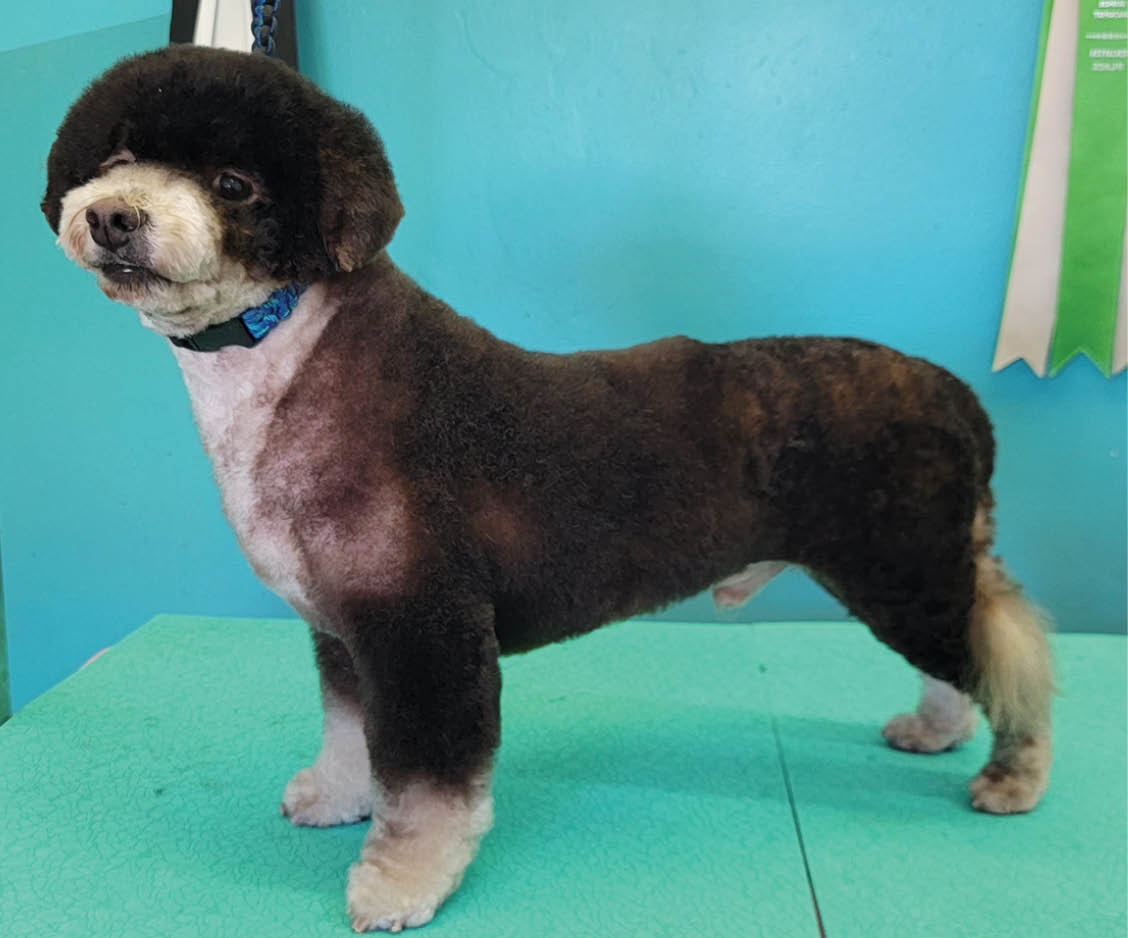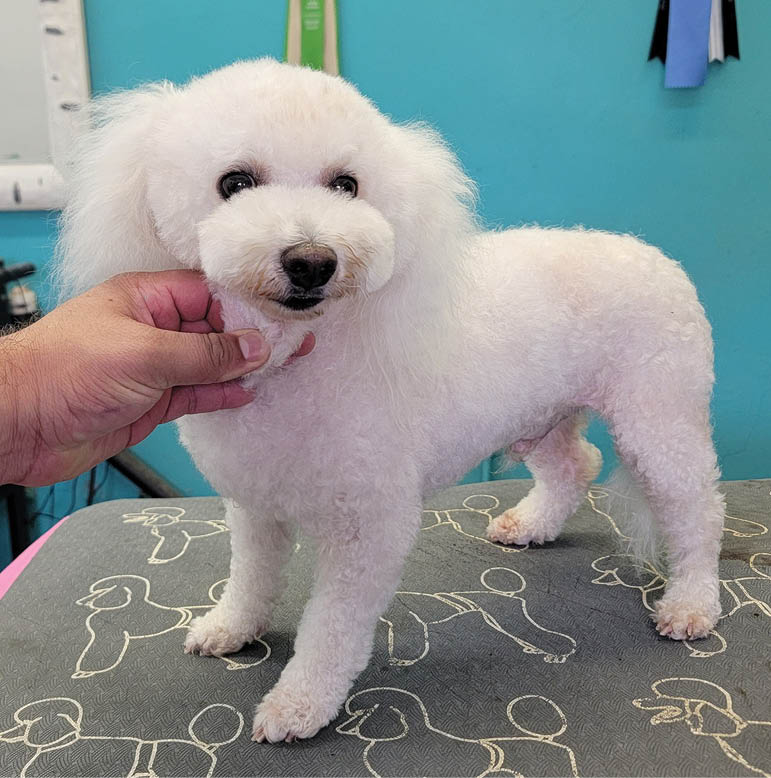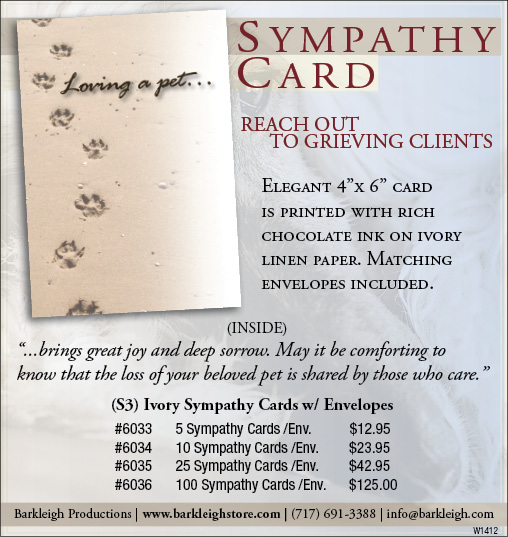

by Blake Hernandez
 his freestyle trim is really a breed trim that is fun to apply to all sorts of curly- or wavy-coated dogs. This particular dog is a Bichon Frise that will be dyed and clipped to have the appearance of a Portuguese Water Dog in a lion clip. And because Porties come in curly and wavy, there are tons of dogs that this could be applied to.
his freestyle trim is really a breed trim that is fun to apply to all sorts of curly- or wavy-coated dogs. This particular dog is a Bichon Frise that will be dyed and clipped to have the appearance of a Portuguese Water Dog in a lion clip. And because Porties come in curly and wavy, there are tons of dogs that this could be applied to. 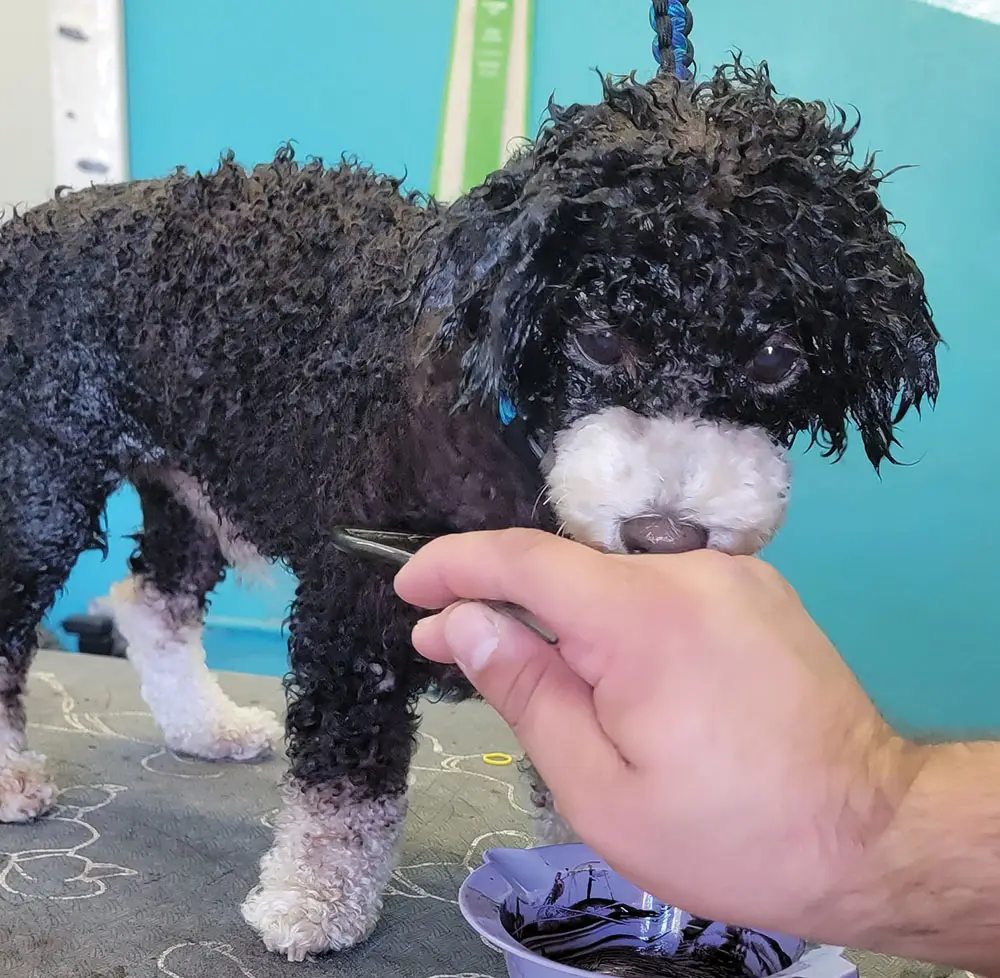
Fig 1) To start, apply a dark brown or black dye all over except the feet, muzzle and area around the point of chest. I don’t use anything to block the colors or create sharp, clean lines because Porties are not marked perfectly. They have inconsistencies with dots of black or choppy color transition, so it all looks natural.
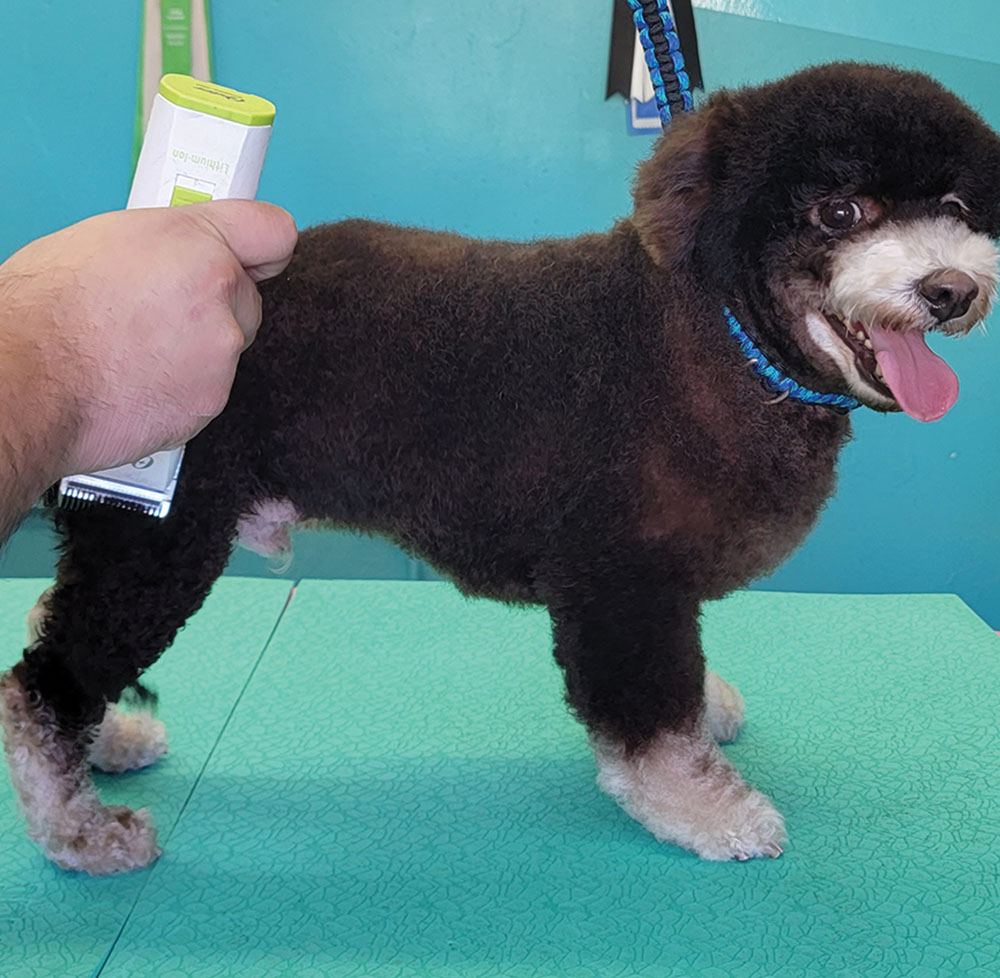
Fig 2) From the dog’s last rib, you’re going to clip the back end all the way to the toes with a #5F blade.
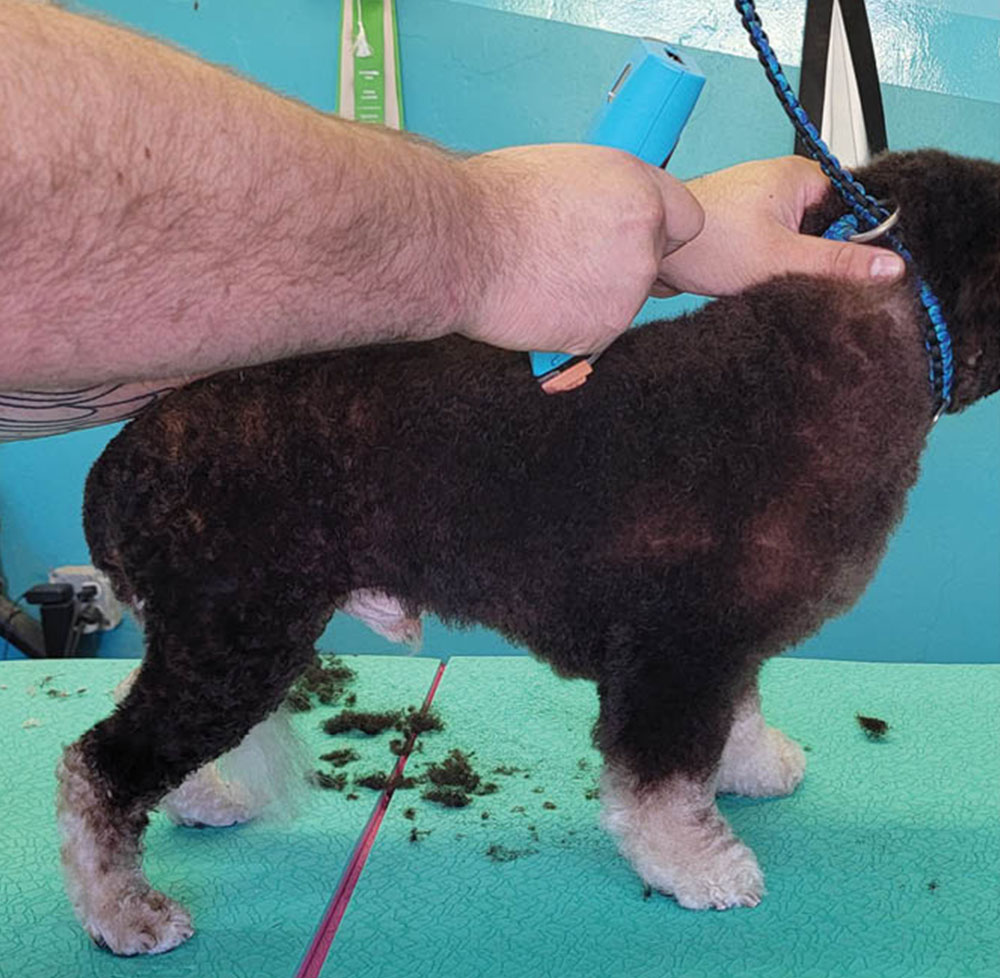
Fig 3) Using a ½” inch guard comb, clip down the trunk of the dog, omitting the chest and skimming into the front legs to blend them into a longer length.

Fig 4) Be sure to clip in front of the upper arm return so you can angulate the dog.

Fig 5) The deepest part of the brisket is done with a 3/8” guard comb.
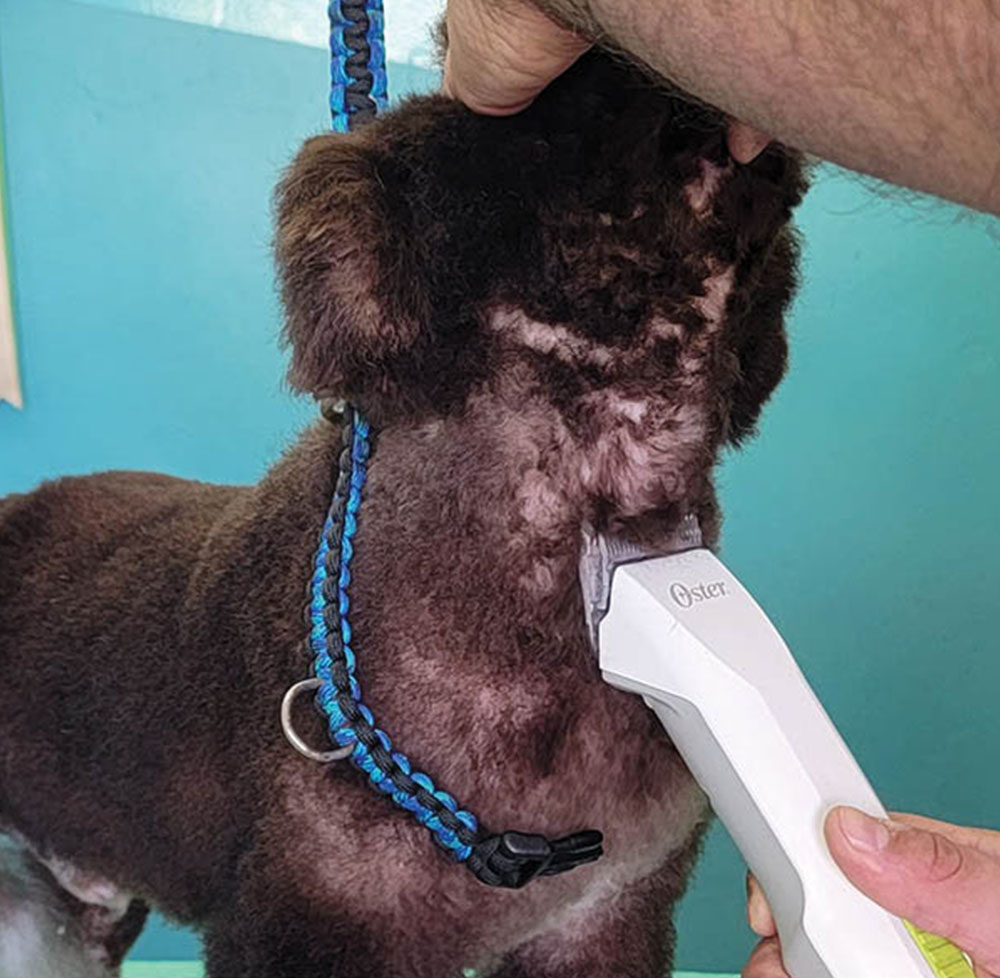
Fig 6) Clip the throat latch in reverse with a #5F blade.

Fig 7) I clipped the point of chest on this dog with a 3/8” inch guard comb, but this will vary greatly based on the dog’s front anatomy.
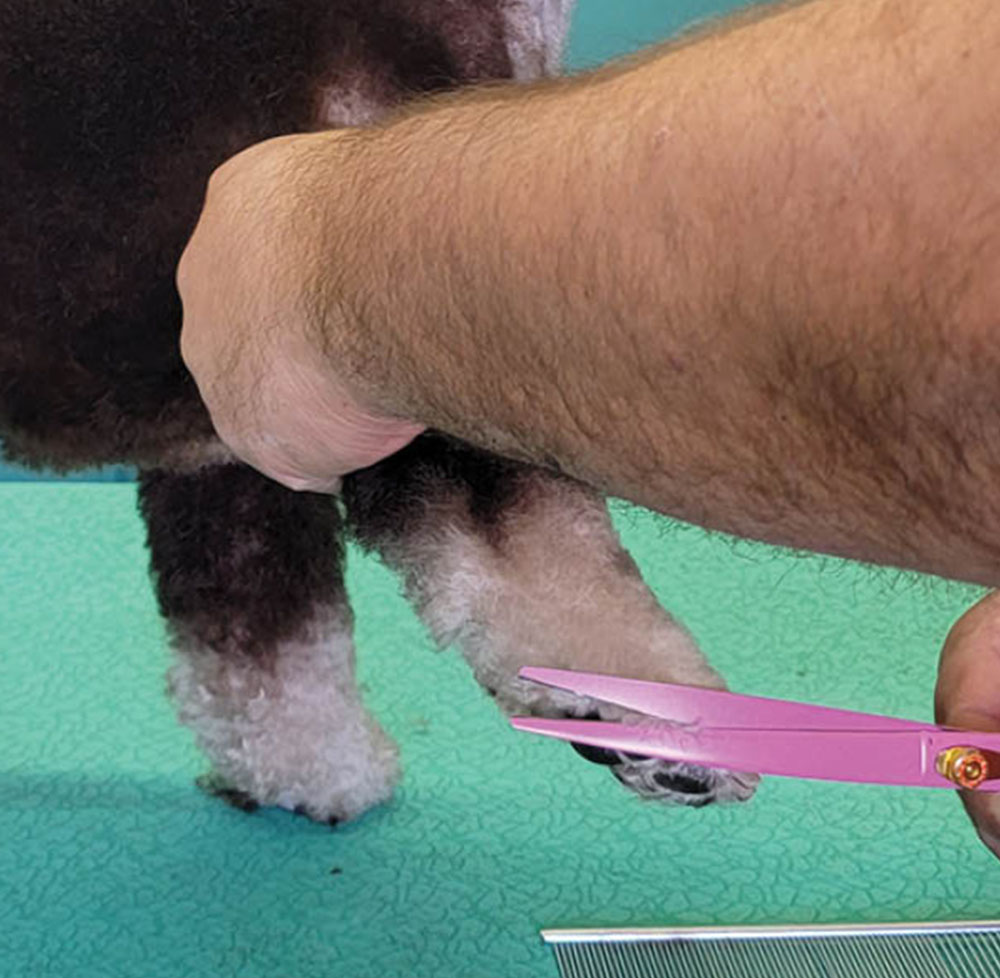
Fig 8) Trim the feet tight and round.

Fig 9) Use a big curved scissor to create definition between your two different lengths at the back of the dog’s jacket.
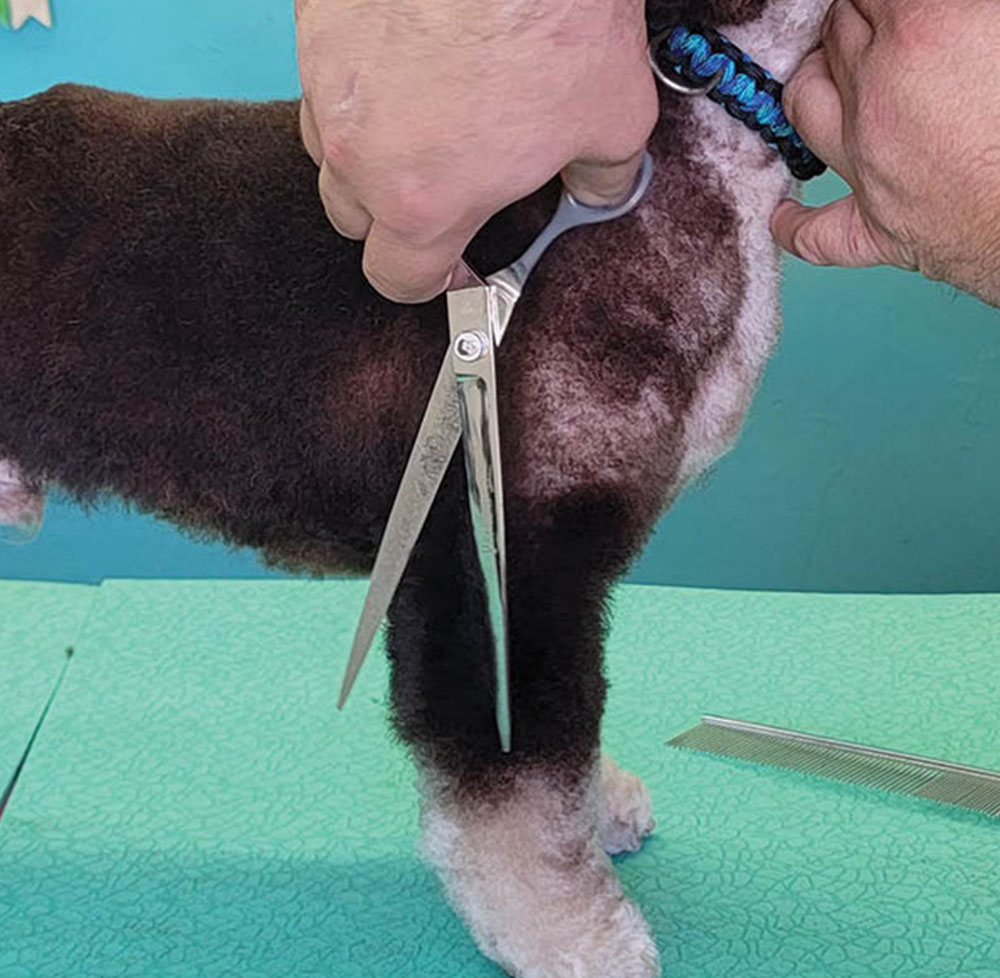
Fig 10) Using a straight scissor, create small column legs for this pet-length variation
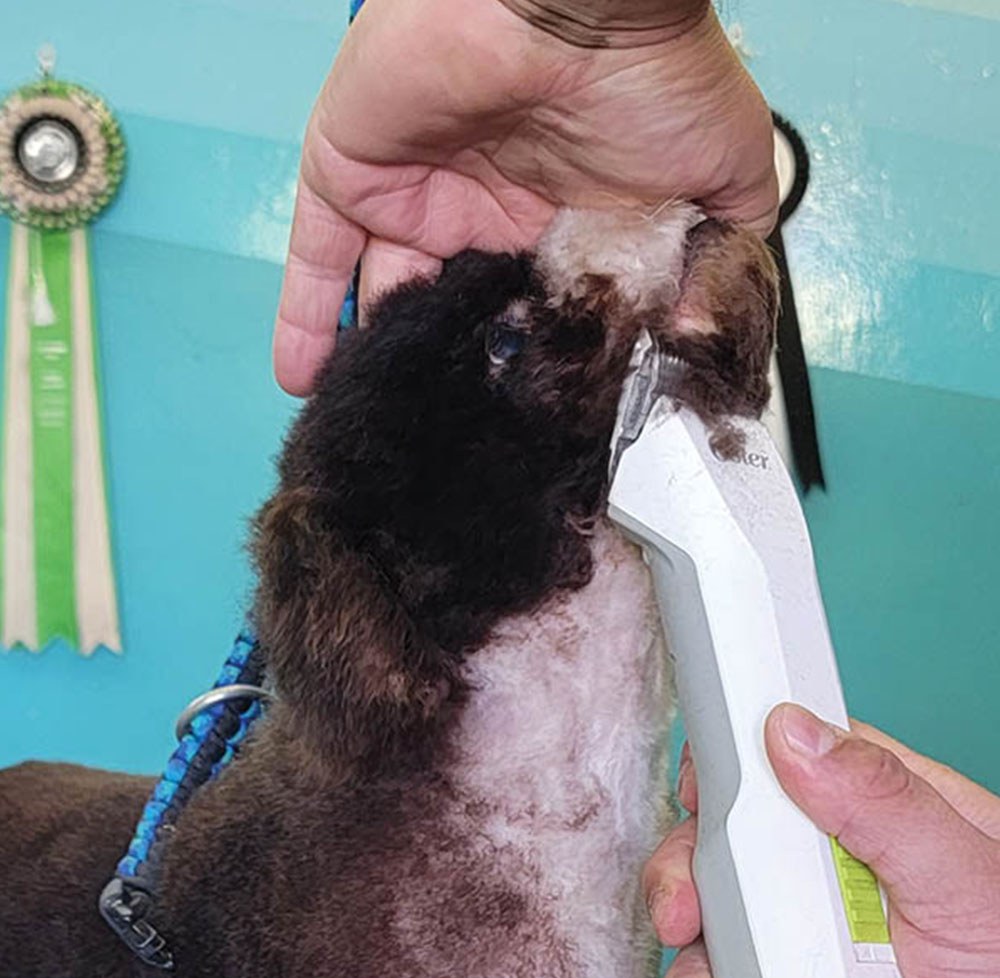
Fig 11) Clip the bottom jaw with a #4F in reverse.
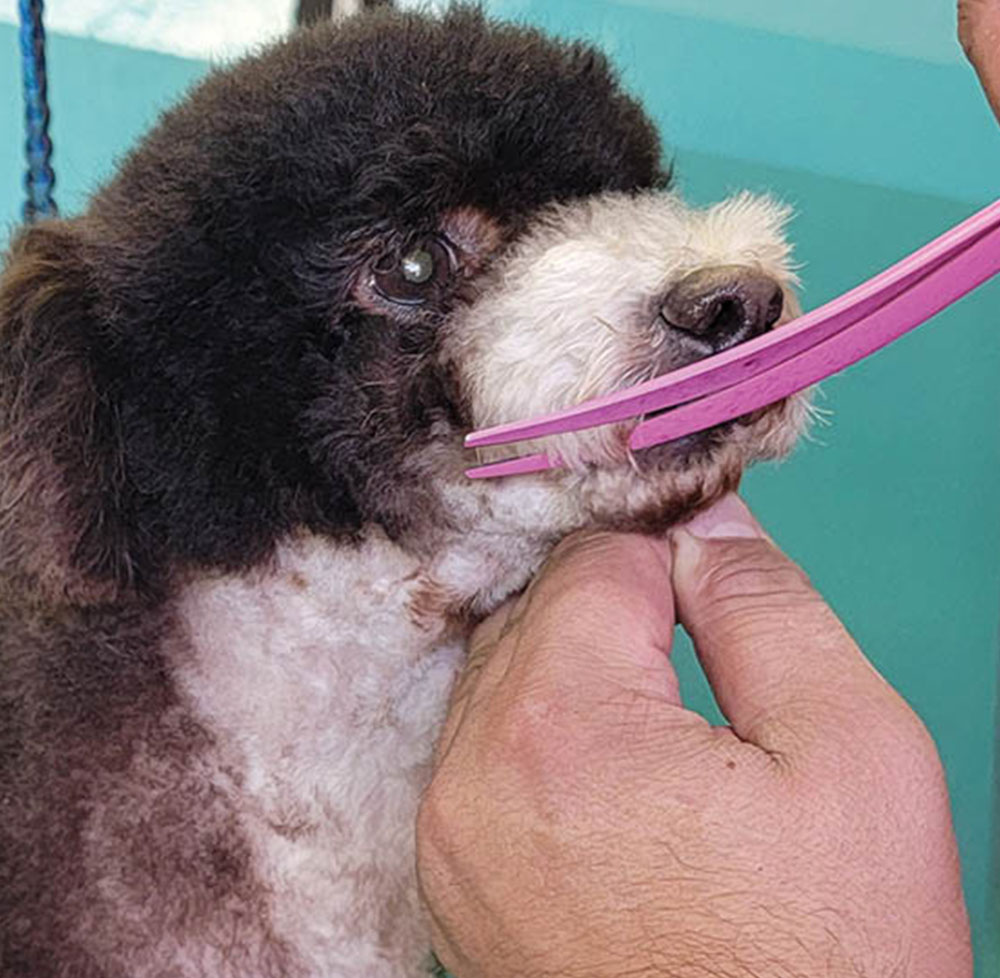
Fig 12) Bluntly round the hair around the front of the muzzle while making sure not to make the muzzle appear too narrow.
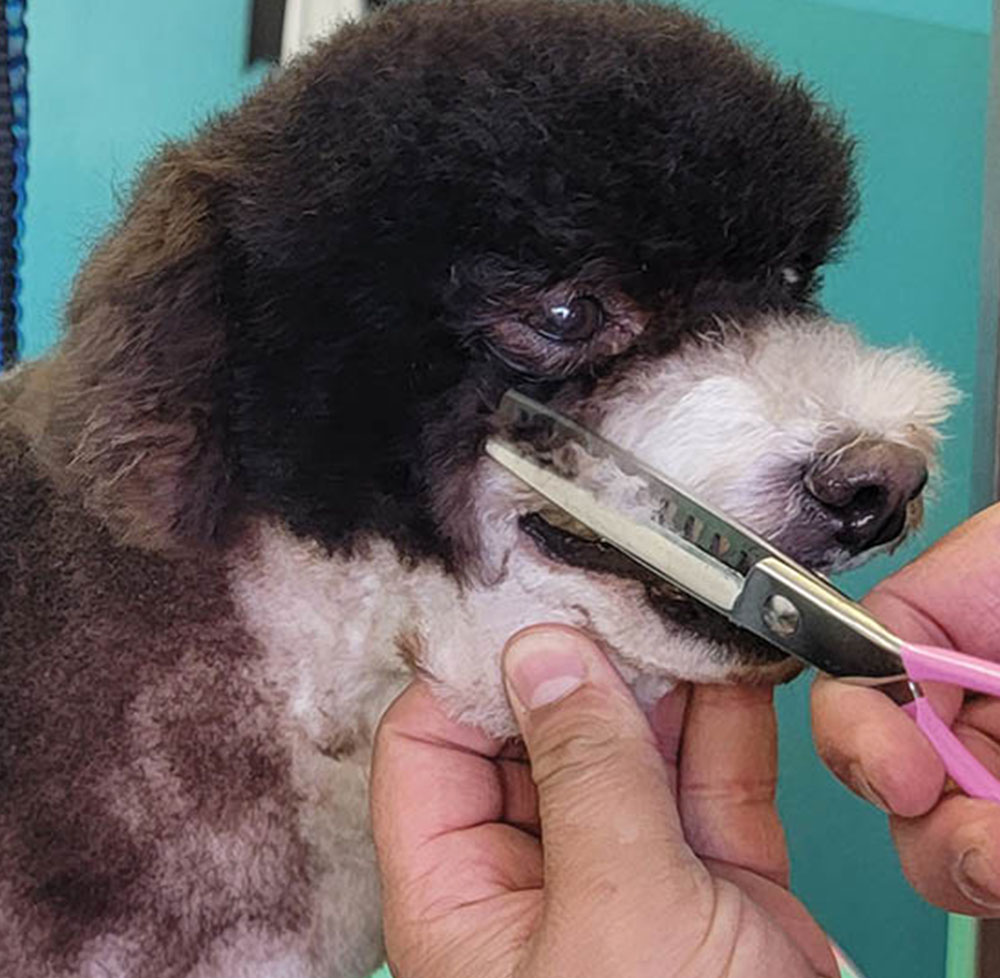
Fig 13) Then use a blending shear to create a robust and clean muzzle shape. Make sure to flare out once you get behind the corner of the lip.
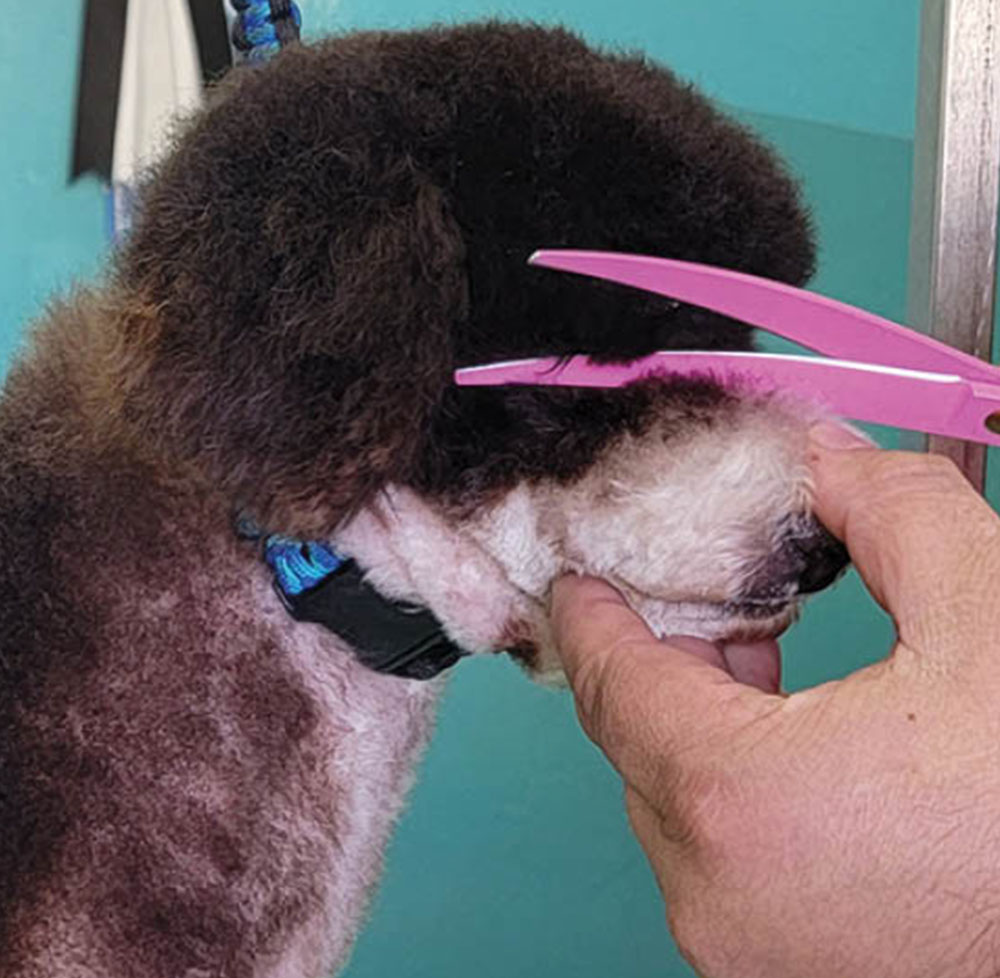
Fig 14) Use a curved reverse scissor to open up the eyes.
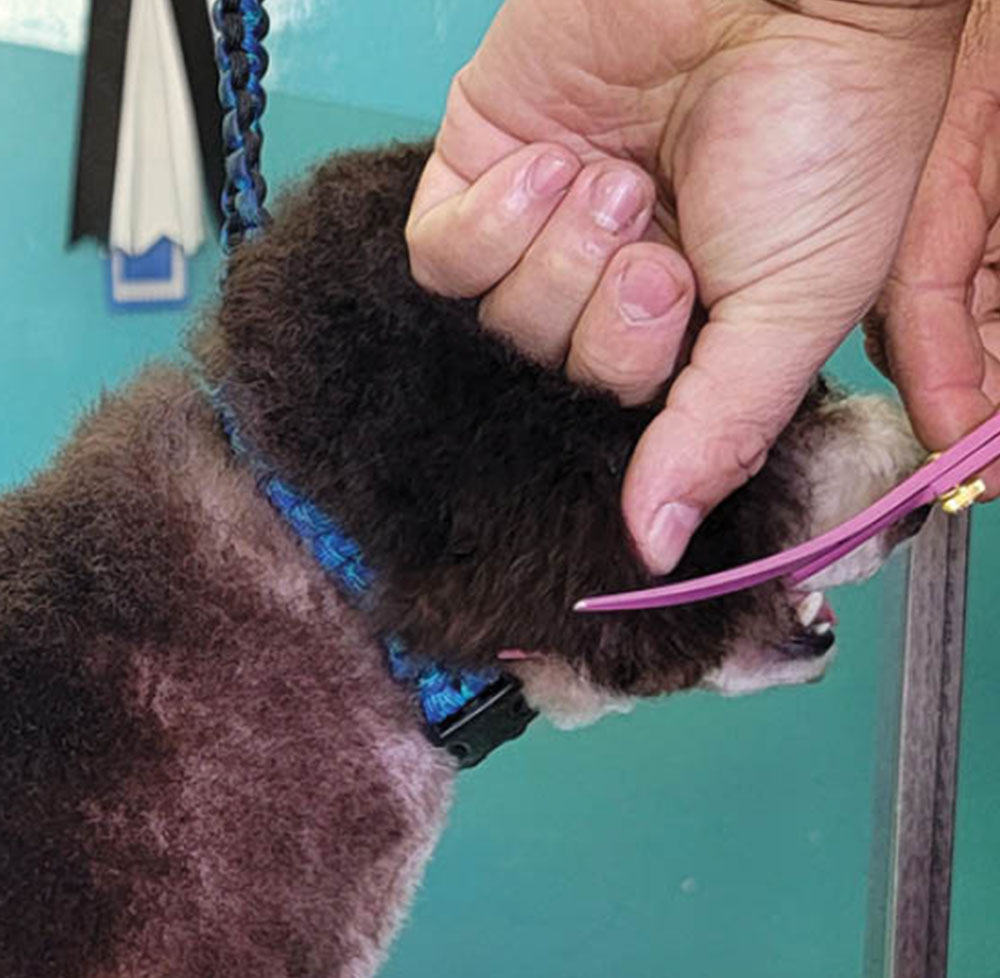
Fig 15) Round the bottom of the ear directly up against the tip of the ear.
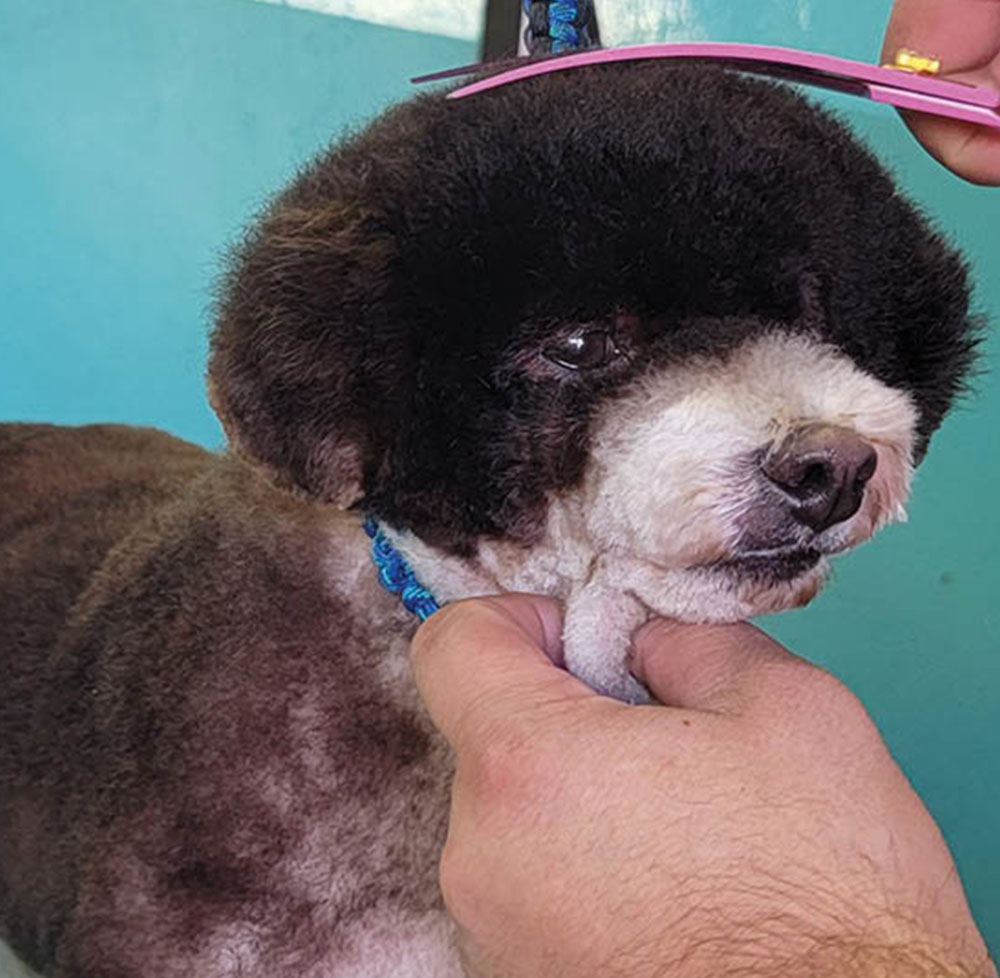
Fig 16) The top of a Portie head is to be broad, so make sure not to give it too much height and roundness or it will look like a Bichon head.

Fig 17) Use a straight scissor to clean up the back of the neck.
The dye is obviously only an option, but the trim will be completed the same either way. This can be a good option for a dog with a matted tail or rear legs as this is a style that doesn’t require the coat to be too long.
